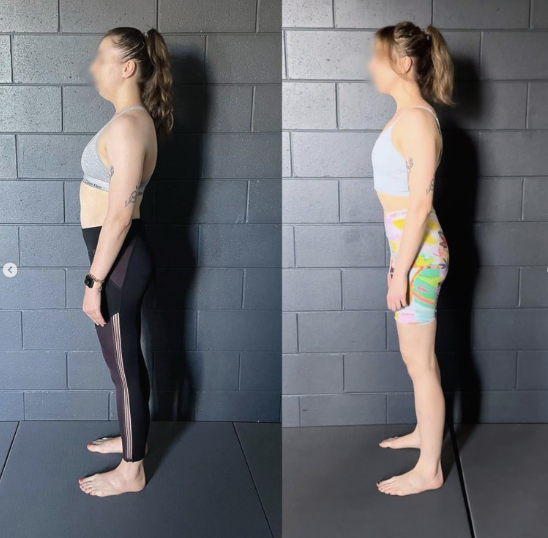Effective Posture Workouts: A Comprehensive Guide
In today's world, advice on improving posture is everywhere. Often, it involves pulling shoulders back, static stretches, or isolated exercises. But here’s the reality: these typical posture exercises don’t create sustainable body function in the long term.
If you’ve tried these methods, you may have noticed your posture barely improved or that any relief was short-lived. For real, lasting improvement, you need a comprehensive, functional approach. This is where gait-based functional training comes in.
In this guide, we’ll explore which exercises can genuinely enhance your posture and which ones could worsen it over time.
Posture Correction Using Functional Patterns
What Sets Gait-Based Functional Training Apart?
Gait-based functional training centers around natural movement, especially walking. Traditional posture workouts often isolate specific muscles. In contrast, this method examines how the entire body works together to support posture in motion.
From your core and legs to your arms, gait-based training aims to create body alignment that improves movement and everyday functionality. When your body functions as a unified system rather than isolated parts, better posture becomes a natural outcome.
Why Common Posture Workouts May Do More Harm Than Good
Stretching Without Activation: Many people focus solely on stretching without reinforcing muscle activation. Stretching alone offers only temporary relief and can weaken critical stabilizers, like your core, leading to muscle imbalances.
Isolating Muscles: Exercises that isolate muscles, such as squeezing shoulder blades, can create compensations in the neck, lower back, and hips if the rest of the body isn’t engaged. The whole kinetic chain must work together for proper alignment.
Overlooking Functional Movement: Exercises like “cat-cow” or abdominal stretches miss the mark by not addressing how the body moves and stabilizes in daily activities like walking, lifting, or standing. Ignoring these movements can worsen posture over time.
Posture-Improving Exercises That Work
1. Gait-Centric Movements for Posture:
Proper alignment while walking is key to better posture. Exercises that mimic healthy gait patterns can enhance posture far more than isolated stretches by teaching your body to distribute weight effectively.
Example: Lunges with hip rotation and proper hinging. This exercise retrains how your hips and legs function while maintaining spinal alignment, supporting both walking posture and hip stability.
2. Core and Pelvic Stability Training:
The core, especially its deep stabilizers, is essential to posture. Training the core and pelvis to stabilize during movement prevents compensatory patterns that can lead to poor posture. Integrating the core into the body’s movement, rather than isolating it, is key.
Example: Gait-based movements that transition from extension to flexion while maintaining core tension.
3. Dynamic Multi-Planar Movements:
Instead of passively stretching or “squeezing” muscles, focus on dynamic, multi-planar exercises that strengthen both muscles and neuromuscular pathways. This approach helps your body maintain upright posture naturally.
Posture Correction Using The Functional Patterns Method
Exercises to Avoid for Lasting Posture Improvement
Static Stretches for Posture Correction: While stretching might temporarily ease tension, it doesn’t address the root of postural issues. Passive stretching without subsequent functional strengthening can damage your body’s stability and worsen posture.
Pulling Shoulders Back: Common advice to “pull shoulders back” fails to address why shoulders are rounded initially. This can lead to strain on the upper back and neck over time, resulting in additional pain.
Exercises Ignoring Gait and Movement Patterns: Exercises that don’t enhance everyday movement won’t truly improve posture. Exercises meant to strengthen the back should address foundational movement dysfunctions, not isolated muscle weakness.
Posture Correction Using the Functional Patterns Method
Conclusion: Prioritise Function Over Quick Fixes
If you’re serious about improving your posture, skip the standard advice you find online. Countless articles on shoulder stretches or “pulling back” won’t yield real results. Instead, prioritize functional movement patterns that support your body as a whole. By improving your movement, you’ll not only enhance your posture but also reduce chronic pain and elevate your quality of life.
Functional Patterns provides effective posture exercises that consistently deliver impressive results. If you’re seeking a sustainable approach to better posture, contact us to learn more.
Final Note: The Functional Patterns Approach
At Burleigh Biomechanics, we specialize in retraining posture through gait-based functional exercises. These movements are designed to enhance both posture and movement efficiency. If you’re ready to move beyond temporary fixes and build lasting postural strength, reach out to us. Let’s work together to restore balance in your body.
Our physical therapy team has successfully corrected posture issues, neck pain, and dysfunctional movement patterns for numerous clients.



